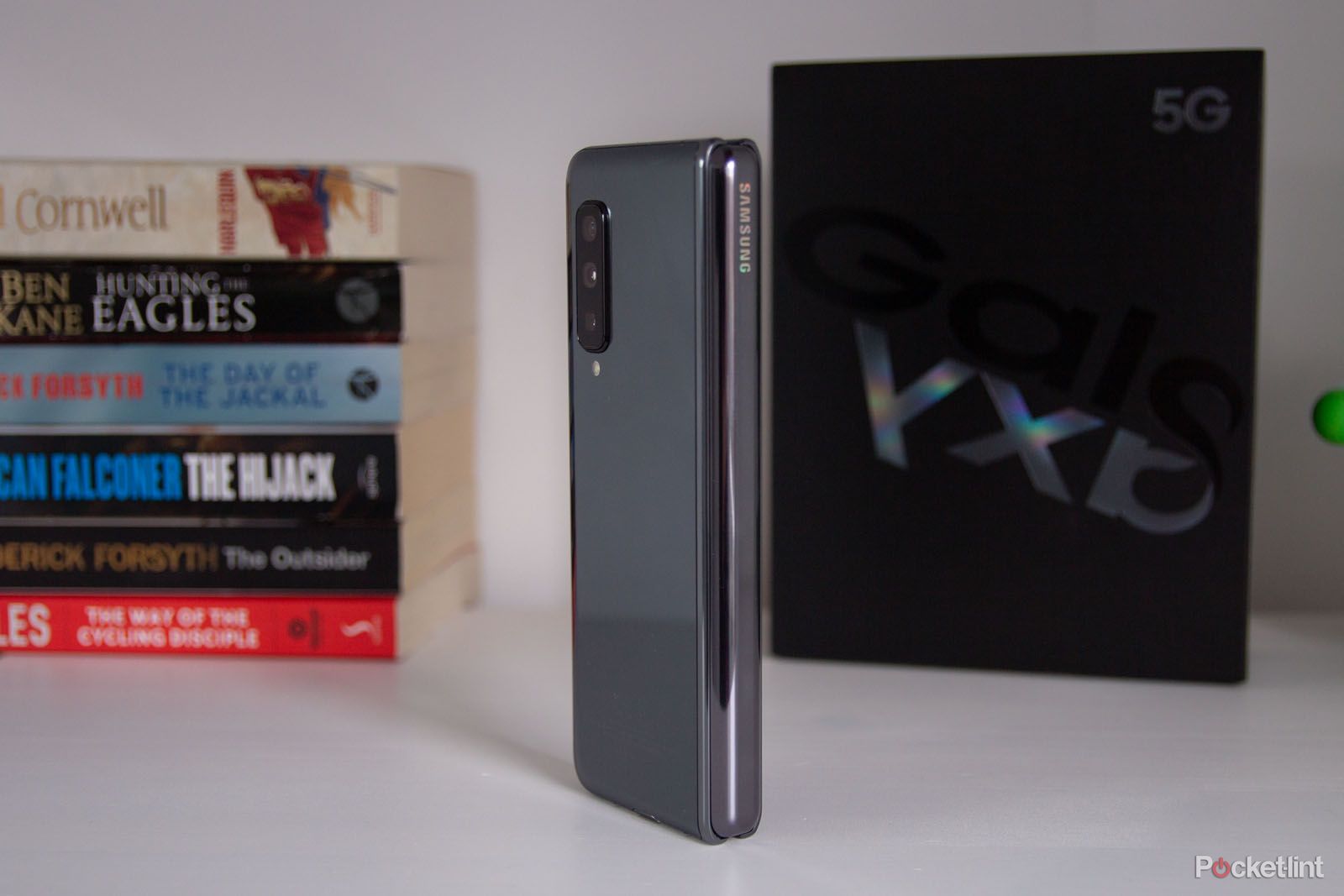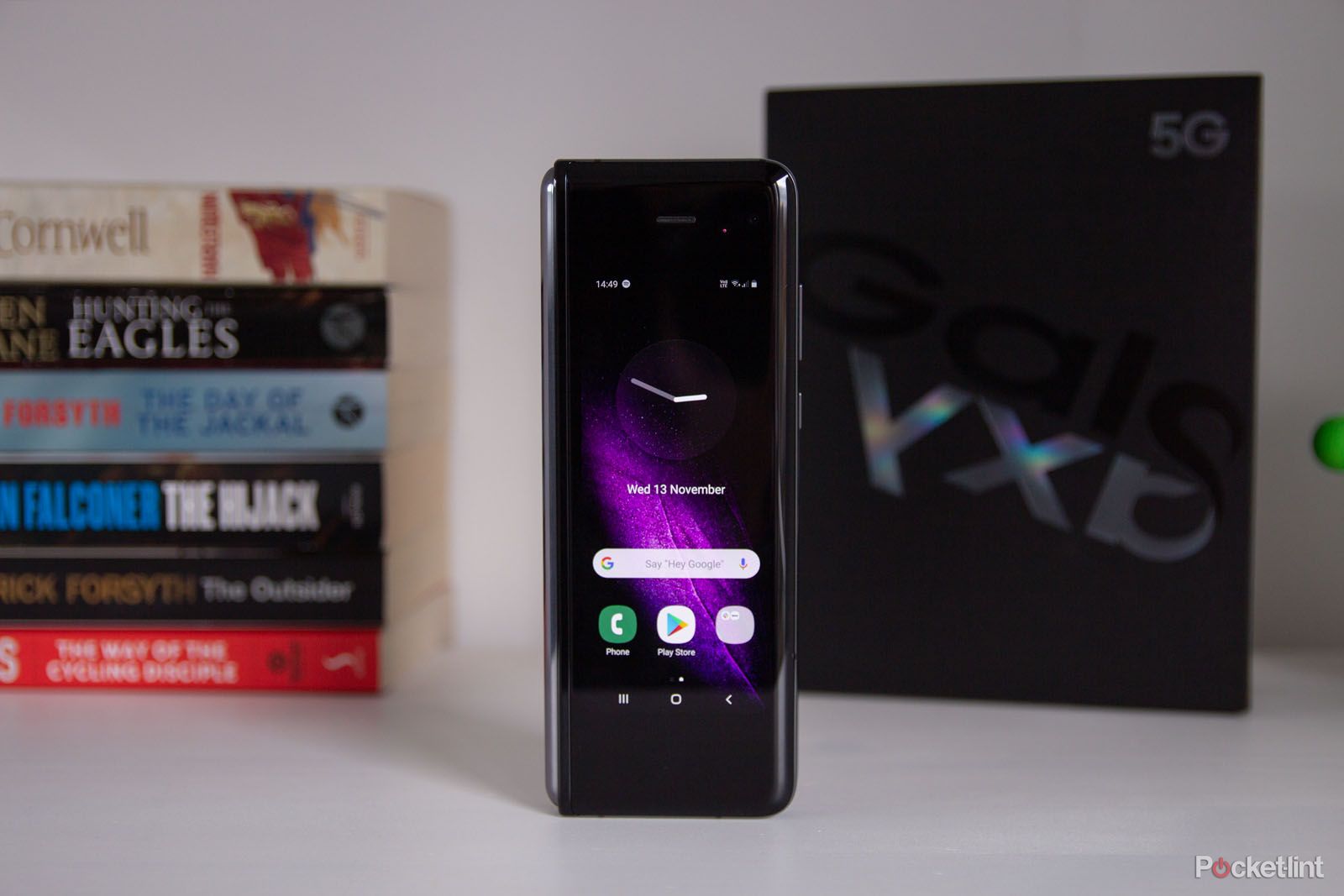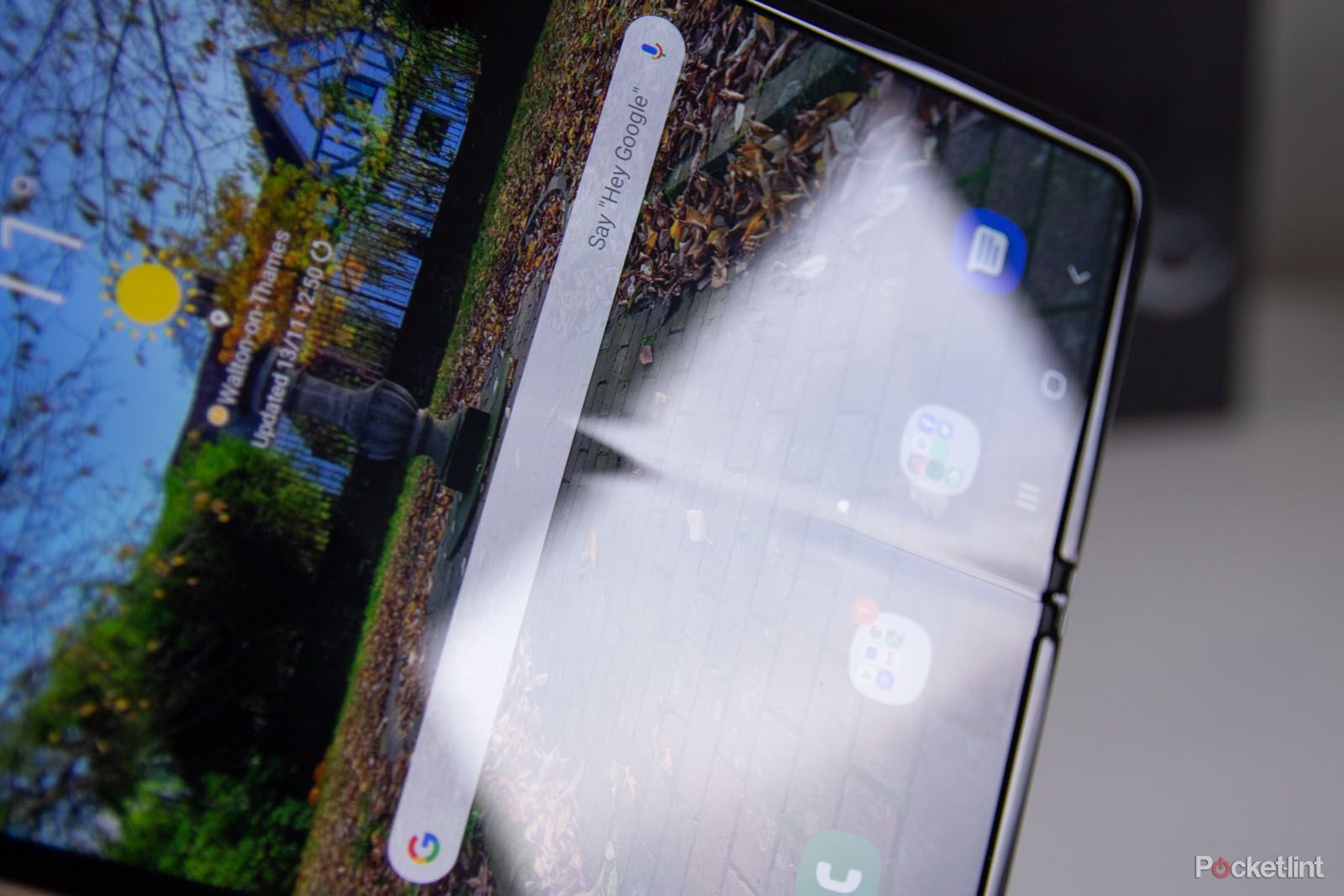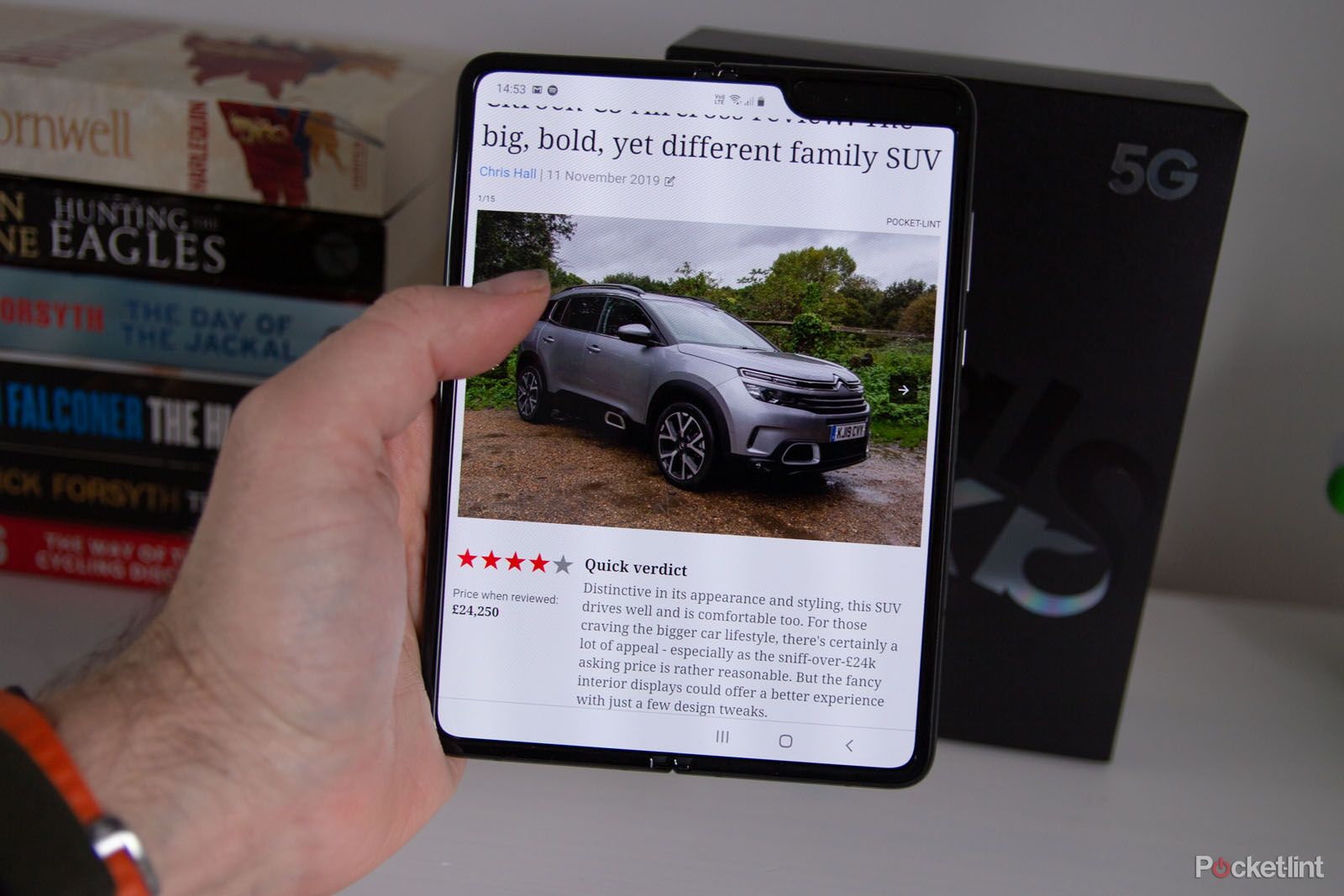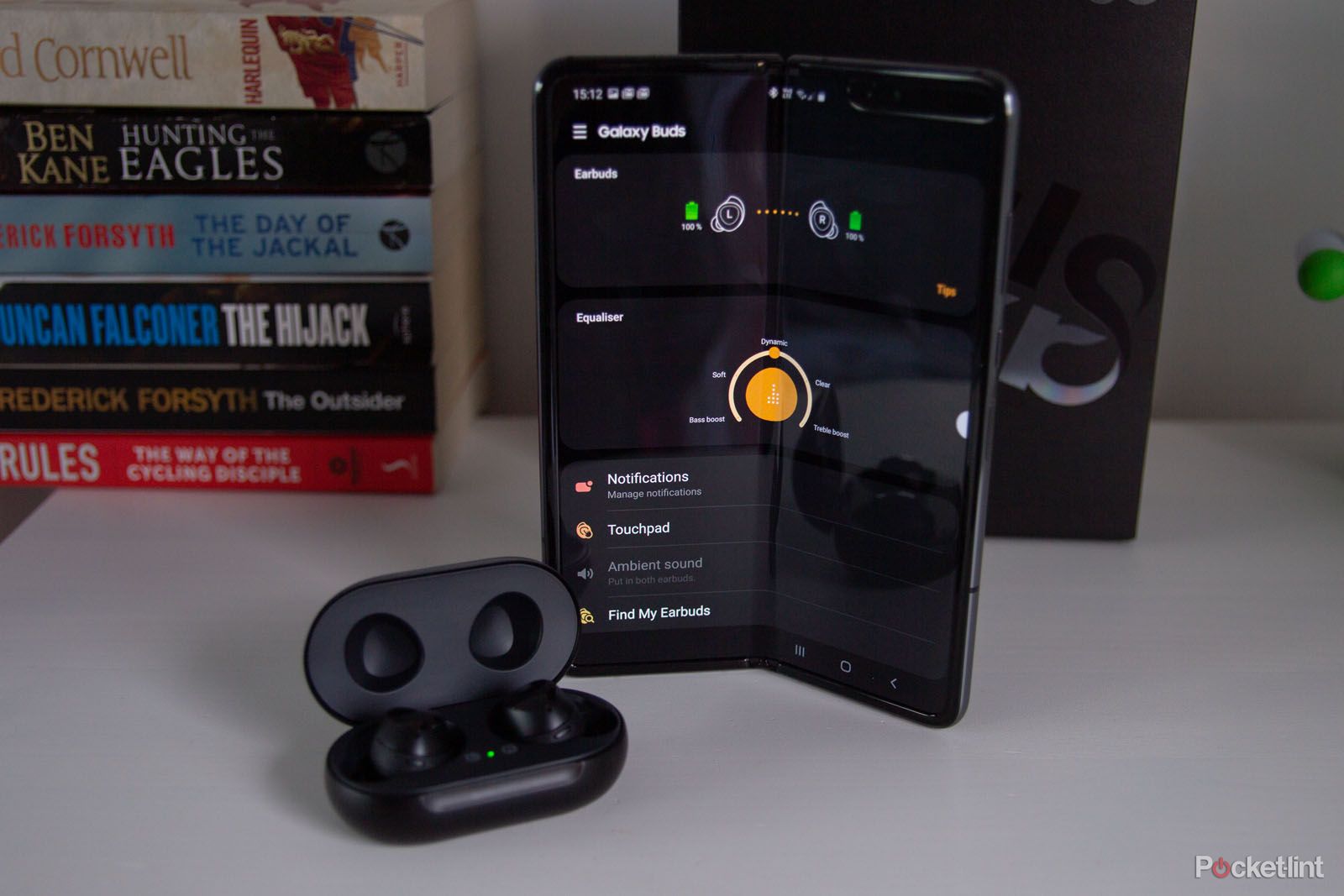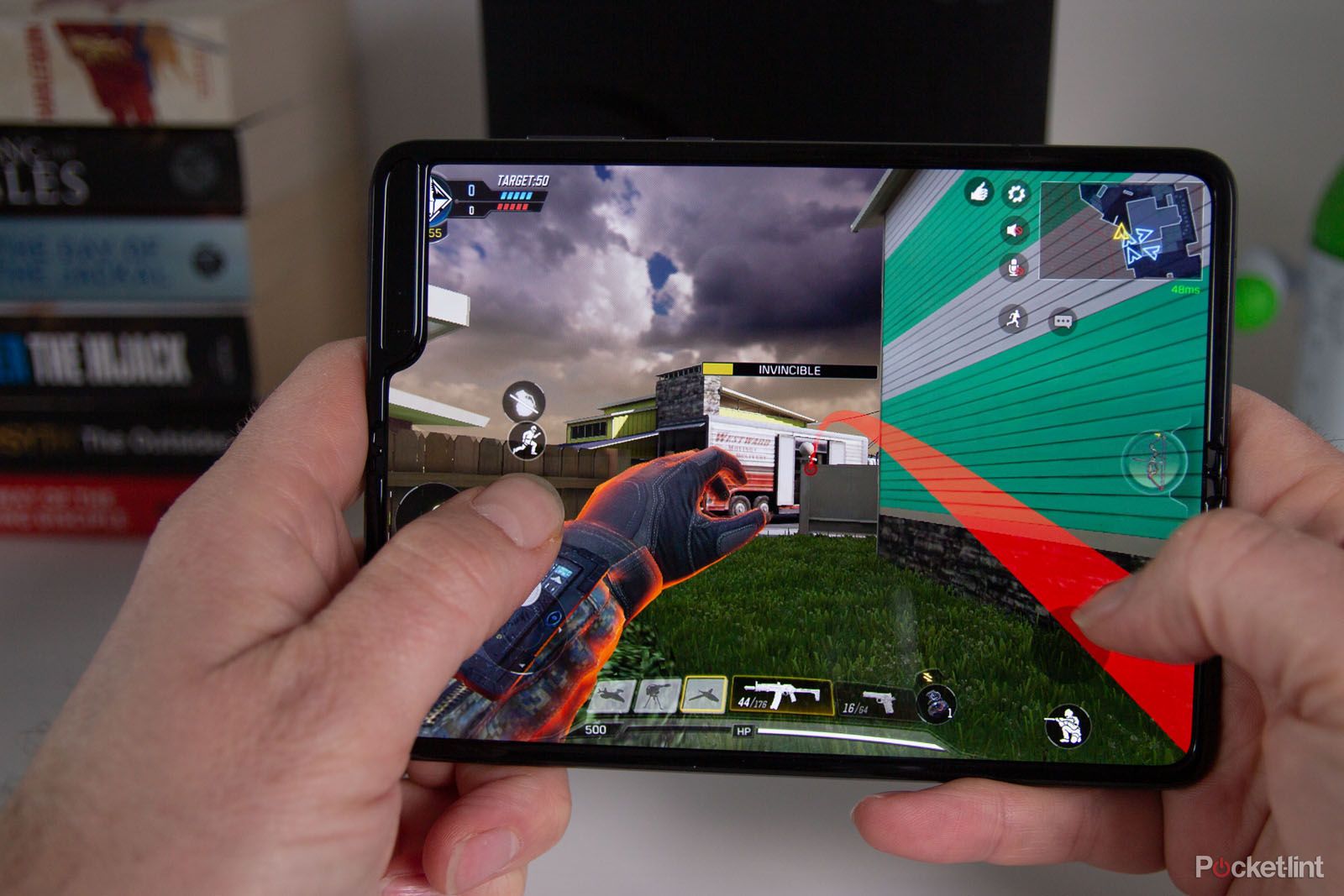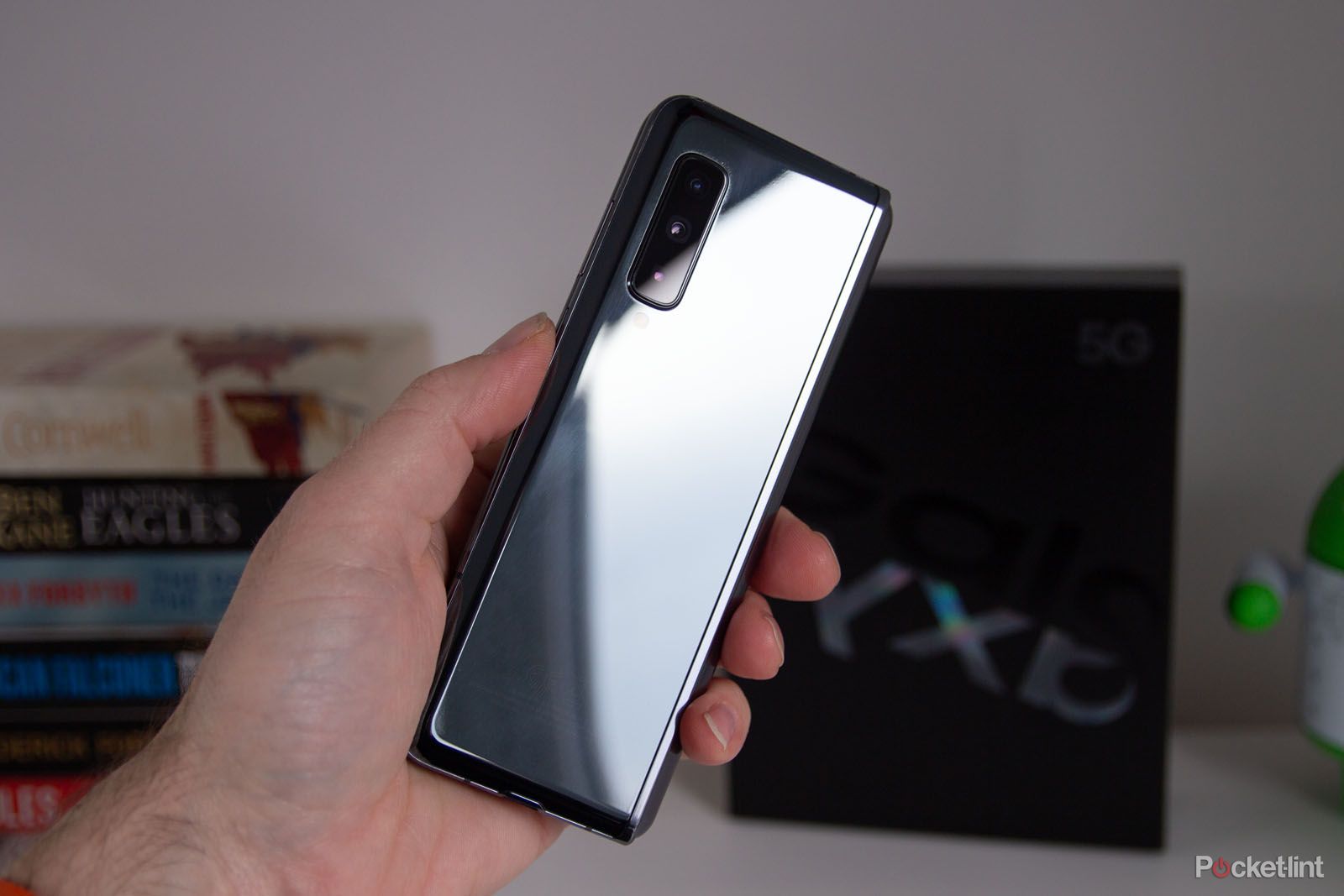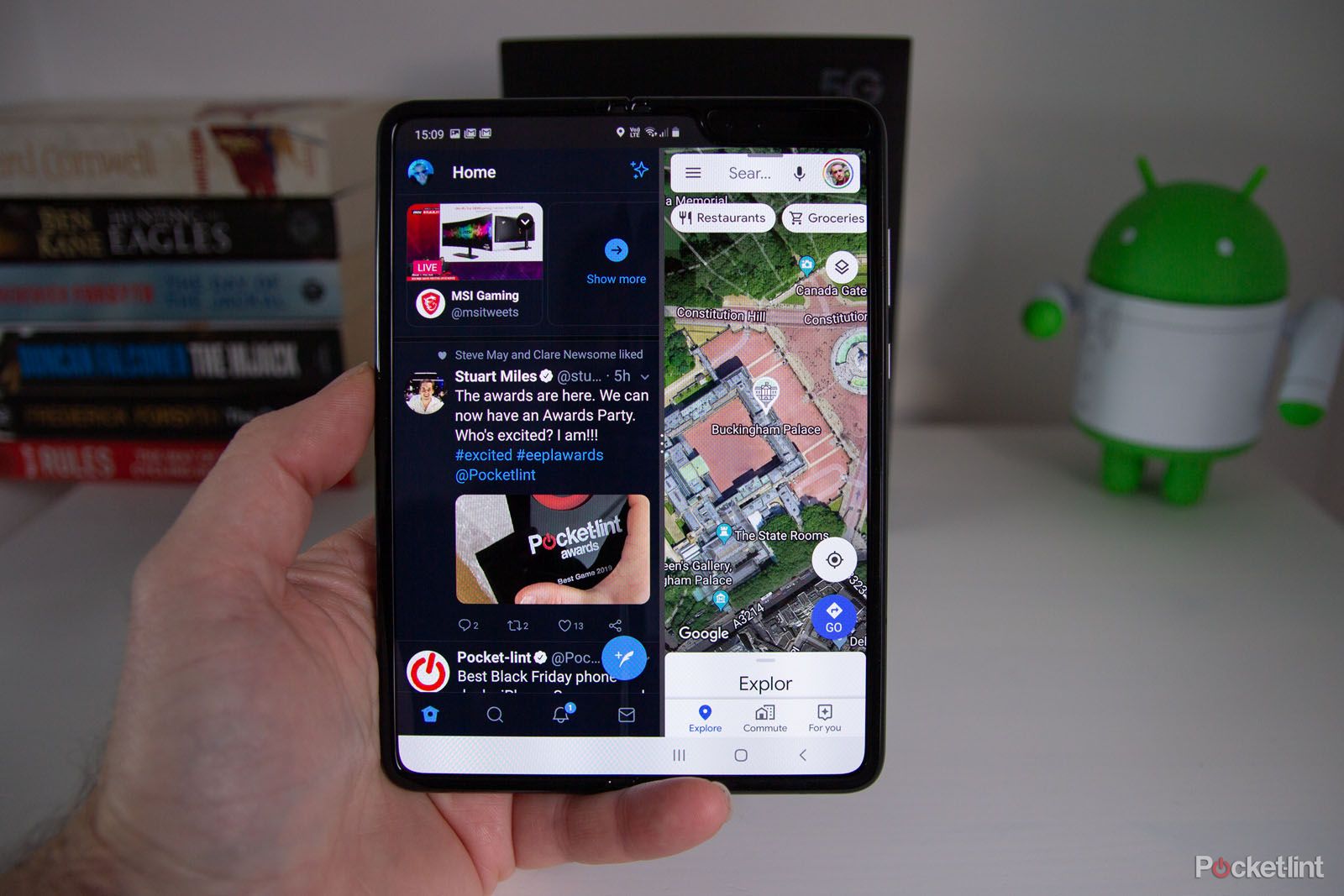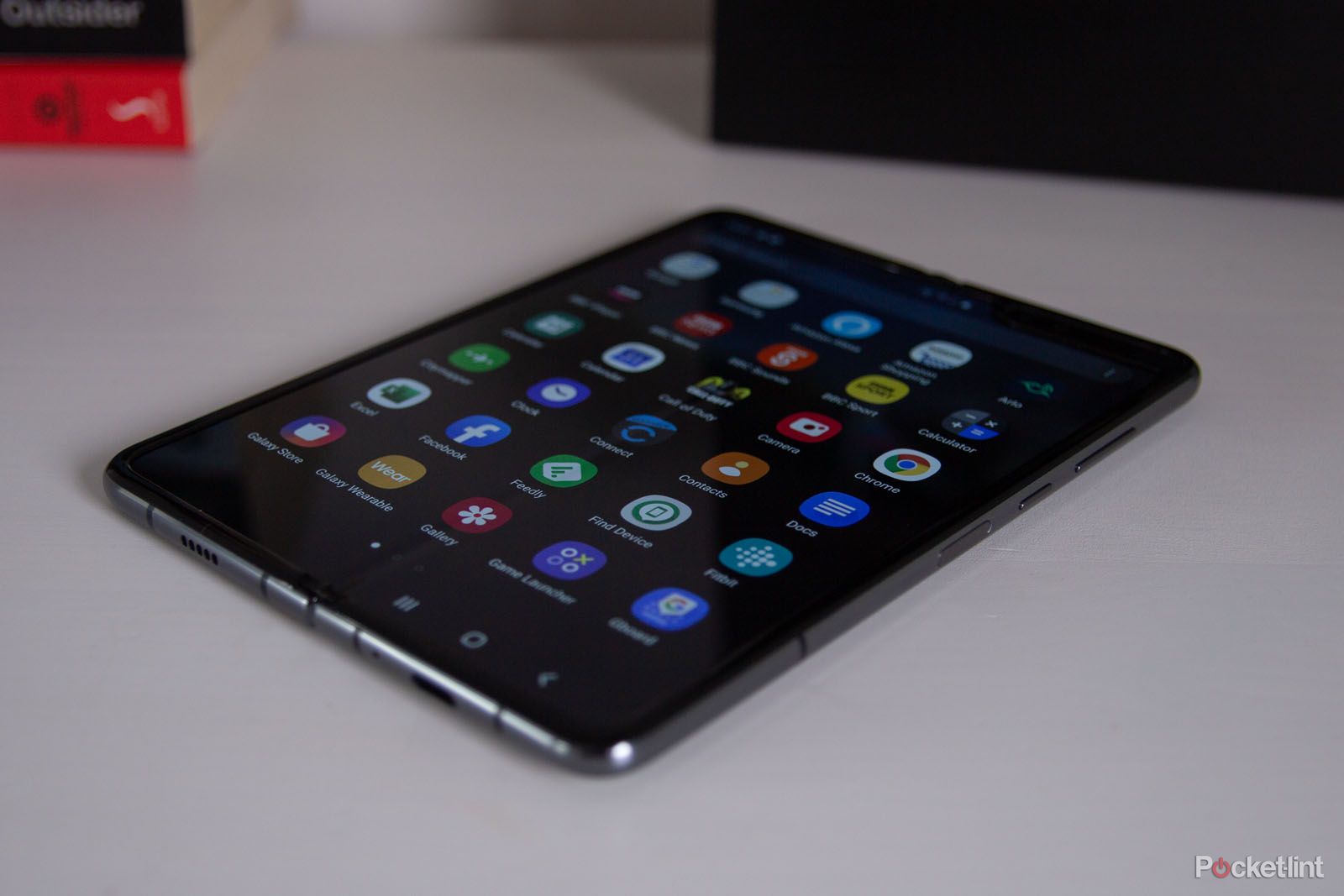When the Samsung Galaxy Fold was revealed at Mobile World Congress in 2019, it drew a crowd. People flocked to the Samsung booth to see this new technological marvel, deeply encased in glass, far from reach.
The criticism came thick and fast: the display wasn't good enough, there was a visible crease down the centre, it was too expensive. The first round of reviews saw people trying to peel the front off the phone, leaving many to believe that Samsung's folding phone was a dud.
It's remarkable how much can be said by people who have never seen or held - let alone lived with - the Samsung Galaxy Fold. Because, fortunately, they're all wrong.
Our quick take
There's no doubt that there's room for the Galaxy Fold to evolve, to improve on the experience. We originally questioned the tablet-esque size of the display and thought we wanted a phone that got more compact like the new Moto Razr or indeed the Galaxy Z Flip, but the Samsung's glorious big display experience sells itself and has huge advantages.
So should you buy the Fold? There are going to be people who just can't accommodate the changes that the Samsung Galaxy Fold will ask of you. Moving from a one-handed to mostly two-handed experience, the bulk in the pocket, not to mention the cost involved. You thought the new iPhone was expensive, so the Samsung's £1900 asking price is far from small.
But the Galaxy Fold is a first-generation device and we'd be more than happy to live with its quirks, because this is a vision of the future. Exploration of what lies beyond the safe envelope of the current smartphone approach is hugely important - and it's where we expect Samsung to be, pushing things forward.
Sure, some parts of this phone aren't market leading, but this feels like the starting point for the next-gen of mobile devices. While other phone manufacturers squabble over incremental changes, Samsung has gone out and done something radical - and we love that.
This article was first published in April 2019 and has since been updated to reflect the full review experience.
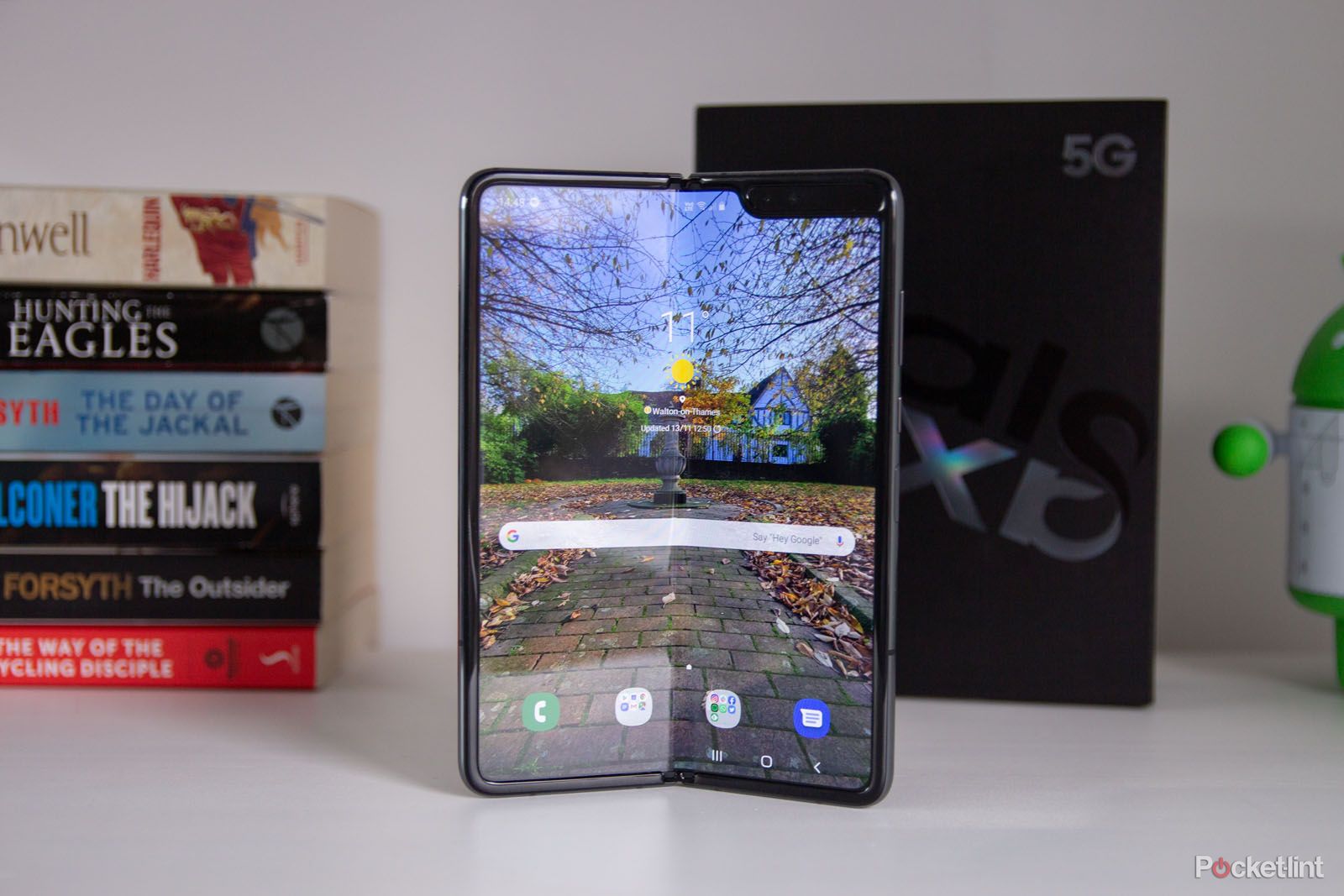
Samsung Galaxy Fold - 4.0 / 5
|
FOR |
AGAINST |
|---|---|
|
|
Designed and updated
- Closed: 160.9 x 62.8 x 15.7-17.1mm
- Open: 160.9 x 117.9 x 6.9mm
- Bixby/standby button
- Fingerprint scanner
- 276g
Opening like a book, one of the most satisfying things about the Galaxy Fold is how it feels to flip it open one-handed, and how it claps shut when you close it. The hinge itself is a work of art and there's a reassuring solidity to how the phone has been put together.
Much of what you'll find in the Fold's design comes from other Samsung phones: the way the antenna breaks cut through the body, the way the speaker holes have been cut, and the placement of the cameras on the rear are all reassuringly familiar.
It's thick when closed at 15-17mm, about double the thickness of a regular smartphone. But at the same time, when closed the footprint is smaller - more a bar than a slab - and perfectly grippy when you're walking down the street clutching it.
It slips into a pocket easily enough (it's no thicker than your average wallet) and having been porting around LG's Dual Screen phone for a couple of weeks, it's nice to have something a little smaller - but it's still hefty compared to, say, the Samsung Galaxy S20+.
From the exterior you can still access a display - the side-mounted fingerprint scanner a usefully-positioned security convenience - although this exterior display is a little small. It's like using that little Palm phone, which does raise some issues.
Unfold the Fold and you're looking at a much larger display space. There have been changes since the first iteration, wrapping the bezel over the edges of the plastic display surface and adding a little nubbin in the hinge so that there's no way that anyone can try to peel the plastic surface off. It's not a plastic cover, it's the actual display. Hence peeling it off would be a very bad idea indeed.
There's a slightly strange notch arrangement on the interior display, sitting in the corner with a couple of camera lenses. It's a shame that the big display is interrupted by this arrangement: with the latest Samsung Galaxy phones opting for a single hole cut into the display, we can't help feeling that would be a better option for the Fold too and we suspect it will be for the Fold 2.
There are two displays
- Exterior: 4.5-inch, 1680 x 720 pixels, Dynamic AMOLED
- Interior: 7.3-inch, 2152 x 1536 pixels, Super AMOLED
With a main display on the interior and a secondary display on the exterior, the Galaxy Fold does more to protect its main display than a phone with the display wrapping around the exterior, like the Huawei Mate X.
Rather than having a protective glass layer on the top, because of the flexibility in the display, it uses plastic instead. That's not so uncommon and there are plenty of devices that use plastic for the surface of their OLED panels - it allows it to be curved and formed - but few devices need to retain that flexibility in use. Samsung has now developed an ultra-thin glass solution - used on the Galaxy Z Flip - but in reality, we don't feel that's hugely different to what's presented here.
The result is that the main display could be potentially damaged more easily that something covered with glass. It's fortunate that it's not in contact with anything when it's closed, but it's not a sealed package when closed and we have no idea what would happen should something like sand get trapped inside when you close the phone.
There is also a crease down the centre of the device. It was something that we all made a big deal out of when the phone was first announced, but in reality it doesn't matter. It doesn't downgrade the viewing experience and in most cases you won't notice that it's there - unless you're viewing darker content in gloomy conditions where it becomes more noticeable.
The display itself is packed with detail, it's bright and vibrant and everything you expect from a Samsung display. Yes, some content seems strange on it, like those 16:9 Netflix movies which now get black bars, but ironically this vision of the future has an aspect close to 4:3, so it suits older content designed for TV really well. It's also probably the best single viewing platform for Instagram. With so many square images, it flows across the Galaxy Fold with sublime beauty.
That wow experience appears in all sorts of places. So many apps come to life on a slightly larger display, so many badly designed websites are easier to navigate. These sound like the sort of advantages that a tablet offers, but being able to snap it closed and slip it into your pocket is a new experience.
The exterior display is a slightly different. It's small and that's fine for some things, but in contrast it's a little fiddly to use for some tasks. Try to type a reply to an email and you'll struggle. It's one of the few occasions that we recommend having two keyboards enabled: Gboard's swipe entry on the exterior gets around the size problem (and is much better than Samsung's keyboard both for swipe entry and voice typing), but on the interior you want Samsung's keyboard, because it will split for easy two-thumbed typing - which is how we use the Fold 85 per cent of the time.
What is unaccounted for is the forehead and chin of the exterior display. Why isn't this display 5-inches instead? Why doesn't it sit closer to the edges of the casing? While it's great to have two displays, the smaller display does feel like it could be better executed and doing a little more for you.
Power and performance
- Qualcomm Snapdragon 855 processor, 12GB RAM
- 4235mAh battery capacity, USB-C fast-charge
- 512GB storage, no microSD expansion
- 5G connectivity
The Samsung Galaxy Fold sits on the Qualcomm Snapdragon 855 platform with a massive 12GB of RAM. There's also a huge 512GB of storage - which might explain away some of the cost - which is handy as there's no microSD card support for storage expansion. There's also no 3.5mm headphone socket, but it does come with a pair of Samsung Galaxy Buds in the box - worth about $/£120 - which is a nice addition.
These are pretty huge specs and in use this shows, with the Galaxy Fold swift to launch apps and delivering a flagship experience. While much of what you look at in the user interface (UI) is very much like other Samsung devices - again, plenty of reassuring familiarity - you can open up to three apps at the same time, which obviously needs a little more grunt, hence the big serving of RAM.
This takes multi-tasking in a new direction, letting you have, for example, messaging apps open alongside Google Maps and Chrome. You'll be able search and navigate, while coordinating with your squad better, faster and more dynamically than anyone else. All this happens without slowdown or lag. Not all apps support it: you can't open Netflix and slide open Slack at the same time, but you can have apps in windows as you can on other Samsung devices.
As we mentioned when talking about the display, the Galaxy Fold can be transformative for your apps. Open up any of the glorious mobile games like Monument Valley and it looks amazing; switch over to your favourite shooter like Call of Duty: Mobile and you've got a big screen experience like no other, in your pocket.
This is boosted by the Galaxy Fold's great speakers on the sides, but this is where we run into the notch problem a little. Some games put controls in the bottom corners (so they are easy to reach with your thumbs) so you have to hold the Fold with the front cameras at the top, otherwise you might lose some controls in the notch. That then means your palms cover the speakers on the side of the phone. Have the notch at the bottom and that's not a problem - while that works for YouTube or movie watching, it's not ideal for some games. Use those Buds and it's not a problem.
With all that said, playing games on the Fold is a blast. It takes a while to get used to the size of the device, but there's a visceral glory to the experience. It's much more like playing games on a small tablet like the iPad mini, except that you can fold it up and put it in your pocket when you're done.
The Samsung Galaxy Fold comes as a 5G handset. That fits its position as a phone of the future. Whether you choose to use it as a 5G phone or not is up to you, as you can buy it on contract or SIM free, unlike some other 5G handsets.
When it comes to battery life, the big 4,235mAh cell will see the Fold through a day easily enough - but it does depend what you do with the phone. Like all devices, once you start pushing that big display hard, you'll find the battery dropping a lot faster. There are phones out there that will last longer - the Huawei P30 Pro for example - but with the Galaxy Fold being unique, there's very little to compare it against.
Fast charging is supported, as is wireless charging and Samsung's Wireless PowerShare. There really isn't anything missing from this phone.
A six camera experience
- Rear: 12MP main, 16MP ultra-wide, 12MP telephoto
- Front: 8MP selfie, RBG depth sensor
- Cover: 10MP selfie
Samsung decided that the best way to make sure you could always take a photo with the Galaxy Fold was to put a camera on every side. That means there's a "cover" camera above the external display, three cameras on the rear of the phone, in addition to two cameras on the interior - wanting to offer a superior selfie experience.
That means that however you're holding the phone, you'll be able to flip to a camera and take a photo. Thanks to the way the phone folds, those rear cameras are always available, so everything is pretty smooth when it comes to access.
The rear camera offers Samsung's main Dual Pixel camera with dual aperture (f/1.5 and f/2.4). It's joined by a 16-megapixel ultra-wide camera and 12-megapixel telephoto in an arrangement that's familiar - it's basically the same as the Galaxy S10+ and now a generation old following the launch of the Galaxy S20 family.
The main camera is a good performer, able to take some great photos in good conditions. There's saturation and pop to the photos it takes, picking up colours and giving them a boost when Samsung's optimiser is switched on - much like the AI modes of other phones. But while Samsung is packing in the hardware, it doesn't seem as capable as some rivals; it's not as good as the Huawei P30 Pro or the Apple iPhone 11 Pro, and while you'll get perfectly good shots in good light, it feels like Samsung has work to do on low-light shooting and zoom fidelity to get back to the best.
Low-light photos carry some image noise that other cameras manage to eradicate, while the selfie camera situation is a little more concerning. We've got used to the Google Pixel giving a good selfie in just about all conditions, but as soon as the light dips, neither of the Galaxy Fold's cameras really responds. You'll get a blurred result or a soft image, which is a shame.
The internal selfie camera has that second sensor which claims to be an RGB sensor. Cover the second sensor lens on the front camera and it only complains when you attempt to use the "live focus" or portrait mode, but the internal selfie camera gives slightly warmer results with a little more detail retained.
As the cover camera will give you live focus without the second supporting lens it's hard to see why Samsung bothered to include it. We suspect this has a lot to do with the Fold being closely related to the S10's development - we suspect the next iteration will be closer to the Galaxy Note 10 in front camera implementation.
That might sound harsh and let's not overlook that there's a lot of good stuff in the Galaxy Fold camera - but it's not at the cutting edge where it should be. Room to improve, certainly.
The day-to-day experience of the Galaxy Fold
While it's easy to pick through the hardware on this phone and judge everything in its own right, there's a larger context to this phone. There's currently nothing like this on the market (the Huawei Mate X perhaps, if you can get one), so a direct comparison to other market leaders doesn't immediately make sense.
The Galaxy Fold turns heads: in a sea of sameness where Google's Pixel looks like the iPhone, and the iPhone looks little different to a budget Motorola phone, the Galaxy Fold is completely different.
At the same time, there will be things for which you need to adapt. Typing on the Galaxy Fold mostly takes place with two hands and that's glorious when you're sitting on the sofa.
Show your friends some photos or something you've found on social media and the experience is better than any other phone, period. But attempt the same thing when you're walking down the street carrying a bag of grocery shopping and you hit the Galaxy Fold's compromise point: the external display doesn't really deliver the experience that you want - it's not a replacement for a regular phone experience, which it should be.
That governs the daily experience of the phone. We'll use the exterior display for playing Pokemon Go while walking the dog, because that's easy, as is controlling music, browsing Slack or turning the Arlo cameras on. But you need swipe typing or voice entry to make sensible replies because the keyboard is so small on the outside, so it's not as useful as a normal phone.
Get home and flop onto the sofa and there's no need for a tablet, fold open the Fold and head back into examining that document or spreadsheet, planning your holiday with friends, or just gaming on the big stage. Here the Fold really works well.
For those worried about the expense and whether the Galaxy Fold is going to last, it comes with a year's Samsung Care+ package, meaning that Samsung will repair, replace or refund if anything goes wrong within that time-frame. It won't cover wear and tear damage, but it provides peace of mind for those uncertain of whether they should invest.
To recap
Yes, some parts of the Fold aren't market leading, but this feels like the starting point for the next-gen of mobile devices. While other phone manufacturers squabble over incremental changes, Samsung has gone out and done something radical - and we love that.

